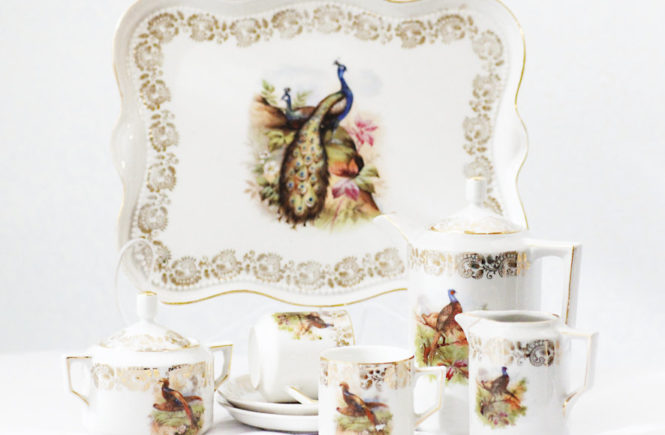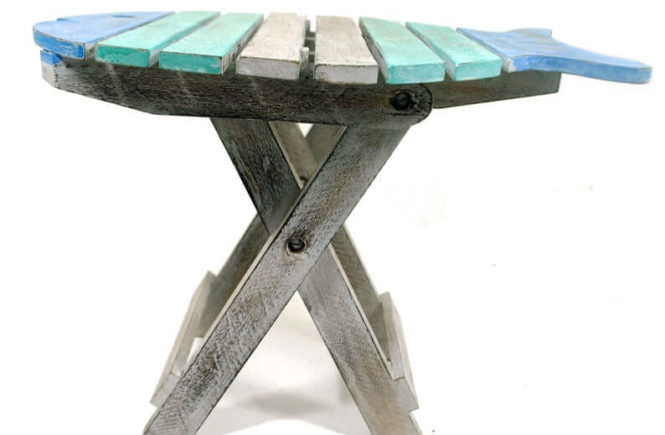[vc_row][vc_column][vc_message bb_tab_container=””]Niche : Home and Living
Shop link : https://www.etsy.com/shop/LoftLobel
Instagram : https://www.instagram.com/andrealobel
Pinterest : https://www.pinterest.com/andrealobel[/vc_message][/vc_column][/vc_row][vc_row][vc_column][vc_column_text]
Tell us something about yourself, how did you get started, do you consider yourself a crafter,maker,artist…
My name is Andréa and I am owner of Loft Lobel on Etsy.
The idea behind the Etsy-shop I feel, actually started a long time ago, in my grandparents’ antique- and auction house in The Hague (the Netherlands). There I learned to value fine porcelain and fine art objects. I was and I still am, fascinated by these objects which were (partially) decorated by hand and designed with such finesse. What inspired these artists? Is their source of inspiration the same as nowadays?
I repeatedly experienced that the beauty of items is timeless when made with genuine care.
But that these objects, like handpainted cups, figurines, vases, or antique photographs need renewed attention, to flourish.
It amazes me, how lots of beautiful objects are thrown aside without even a glimpse of further examination.
When I find such objects, I clean them gently and examine them for damages. Then I search for signatures of the original artist or designer and try to picture their beauty as I experience it.
Luckily I noticed that a lot of costumers shared this ‘love of forgotten items’.
This made me confident enough to try to mediate between buyers/collectors and the beautiful items from an era long bygone.
How did you discover Etsy? Did you have any previous experience in selling handmade products? Why did you start selling online?
I used to pin paper ads from magazines and wall-paperprints to a moodboard. And I experienced the digital alternative (Pinterest) as very addictive.
Often when a pin came along, which I really liked, it referred to an Etsy-store. This was my discovery of Etsy.
I was very pleased that a lot of the objects I liked were handmade by craftsmen/women on Etsy and that antiques or vintage items seemed to be ‘handpicked’, more or less exclusively, with the same dedicated attention, I felt.
This was quite appealing to me and led me to a deeper interest in the way Etsy worked.
What products do you sell, what type of materials are used in your creations, how do you design your products, what makes your products stand out ?
I deeply admire handcrafted items, refined paintwork, Fine Art Photography and I was told this reflects in my selection of finds for my shop.
I sell handpicked antique or vintage items, my main interest lies roughly in an original manufacturer’s period between the 1890s-1940s. These items consist mainly of porcelain or fine bone china and antique Real Photo Postcards and Lithographs made by Fine Art Photographers and Designers.
What I try to offer customers is the thorough examination of the objects before listing them on Etsy, so that the customers can feel confident about their condition and can get information about the history. Customers often tell me they like to hear about the history and background of a certain portrait, transfer painting or floral design.
How was your experience in learning to craft, are you self-taught or did you have a mentor, how long did it take for you to be satisfied with your creations
In setting up my shop on Etsy (5 years ago) I got a lot of help from the editing-system of Etsy itself. Also from other shop-owners at Etsy, who we’re quite welcoming and warm-hearted.
Personal communication with my customers was a blessing to me; I got a lot of insights and helpful ideas. I have quite a large message-history, which I regularly read back, to see how the progress of customer’s questions, remarks, and customized orders evolved.
[/vc_column_text][/vc_column][/vc_row][vc_row][vc_column width=”1/3″][vc_single_image image=”100000871″ img_size=”737×737″ onclick=”link_image” css_animation=”appear” bb_tab_container=””][/vc_column][vc_column width=”1/3″][vc_single_image image=”100000870″ img_size=”737×737″ onclick=”link_image” css_animation=”appear” bb_tab_container=””][/vc_column][vc_column width=”1/3″][vc_single_image image=”100000869″ img_size=”737×737″ onclick=”link_image” css_animation=”appear” bb_tab_container=””][/vc_column][/vc_row][vc_row][vc_column][vc_column_text]
What was your original goal when you opened up an Etsy shop? What impacted your decision to start selling online? Do you consider online selling as a side-job, full-time job or extra income to pay for your hobby?
I didn’t have a distinctive goal at first, other than that I liked the idea of sharing my admiration for refined antique/vintage objects with co-collectors or customers who were looking for something pre-loved from an era bygone.
Along the way, various customers or followers confined me with questions about certain porcelain objects or fine art photography they were searching for, for themselves or as a gift for their loved ones.
Online selling is an extra income for me and for now I am very grateful for that.
There are plans to expand, but that needs thorough preparation and this might take another 1-2 years.
Did you have any fears or reservations before opening up your Etsy shop? Were you worried about profitability or product competitiveness? What are some concerns and questions you had before you got started? How did you overcome them?
I certainly had fears and reservations before I started.The most challenging part for me was the shipping-method for extremely vulnerable fine porcelain items, all over the world.
It took me some time to find out what was the most careful, and at the same time, an affordable way to send parcels across the world.
The thing is, that when the items got damaged along the way or didn’t arrive, I could hardly ever replace them since they were quite rare and hard to find. Cooperation with the Dutch Postal Services and of course keeping close communication with the customers made it possible to find a way to get the parcels through in an unharmed way.
And aside from the present situation of Covid-19 safety procedures, I must say that in most cases the delicate porcelain objects, fortunately, get through safely and promptly.
But the first weeks when I started selling on Etsy and waiting in full anxiety if the boxes came back broken or arrived safely, will not easily be forgotten.
How long did it take for you to get your first sale? Did you ever thought you would make a lot of sales in the first year? What was a goal you were hoping for? How many sales an average you get per week?
My first sale came within the first week and I was astonished and so happy! The 2 Japanese eggshell porcelain teacups and saucers were a Christmas-gift and went all the way to the USA.
My first sale immediately made me consider shipping-procedures, packaging, gift wrapping, etc. And it took my 2 days to get this first order right. At that moment I could not imagine that I would get used to the excitement of careful packaging, gift-wrapping, and shipping, but luckily I did…
The average of orders depends on the season, but I would say about 5-6 orders per week.
Do you have a job outside Etsy? If not, are you able to commit full-time to online selling? How does your typical day look like? How do you manage time?
I am a (free-lance) photographer.
Depending on the season I spend more time on Etsy and less time on photography. I try to balance this, and it usually works out well. In some way working as a photographer and selling on Etsy compliments each other. I get inspired when working as a photographer which I translate into my photography for the items listed on Etsy and vice versa.
Maybe there’s a chance that one day I will feel confident enough to sell some of my photography in a little corner of my Etsy shop, but for now, I am more than fortunate to sell the items which were made by craftmen/-women a long time ago.
How does your manufacturing process looks like for e.g. your best selling product? Do you create products ahead of the orders? Do you customize your products, if so how? What are tools that you are using in manufacturing process?
There are quite a lot of different workflows in the selling-process: the search for objects, the examination/determination of the objects found, their presentation on Etsy, the selling and customers’ service and the shipping and handling when purchased.
When a customer purchases larger quantities at once, I try to think of ways to combine the shipping to make it more affordable.
If, for instance, a collector bought a teacup with a certain design or from a specific manufacturer, I send them a message, when I find a similar pattern to match.
I get customized search-requests on a regular base and often I leave home for the holidays with a notebook full of customer’s requests, in case I visit an antique market or auction house.
I feel I spend a lot of time in packaging and gift wrapping. It is a part of the selling-process I really enjoy. Since the customer can’t really have a life shopping experience, I try to make the unwrapping of their parcel a special moment, by writing a personal note, the use of different kinds of wrapping-paper or little gifts, matching their purchase.
What is the biggest impact on profitability of your shop? How expensive are the materials you use? How do you price your products?
In a way, selling antique or vintage ceramics or porcelain is quite a vulnerable process, since the items are usually rare finds. Although there’s a large range of antique and vintage products for sale at outdoor markets, online shops, estate sales, and auction houses, the quality and condition is often not that good, which means; without signs of wear, chips, cracks, hairlines, etc. Finding antique or vintage items in a good pre-owned, used condition is often a ‘tough’ process of long searches without results and quite a bit of disappointment.
Apart from that, there’s the risk of products getting damaged or lost at shipping. And it is quite hard to replace the lost or damaged items. However, when I am fortunate to find these special, beautiful objects in a good condition and they are safely delivered to their new owner, it makes it all worthwhile..
What inspires you when you’re creating? How do you get ideas for new products? What are some methods or tools you use to get creative?
The idea for new or other products is a fluid process.I try to broaden my view of what I consider to be beautiful or appealing by consulting my customers, visit other sellers’ shops, read books on the objects, and visit exhibitions, fairs, markets, and museums.
I try to understand what my customers value the most, and why they prefer certain styles or designs. It seems that in the choice of antique and vintage items cultural history is quite dominantly present.
The link to a customer’s heritage or a certain nostalgia often seems to determine the choice for a certain object.
I really feel this deepens the selling process for me; to learn and understand the reason the customer likes a specific item so much and to communicate about it.
Do you ship your product internationally? How do you handle postage pricing? What is average time it takes from the order to the delivery? Do you use free shipping? If so, why? How do you package your products?
The items are being shipped worldwide via the Dutch Postal Services (PostNL) since the beginning five years ago. I send all parcels with tracking codes and insurance. Although at the moment we experience challenging times due to Covid-19 situation, overall the shipping and careful handling of the items usually works out well. Depending on the country the parcel has to be sent to, it takes from 3-21 workdays to delivery.
I use standard shipping-prices based on weight (PostNL)and add tracking and insurance on my behalf. I use new, but recyclable cardboard boxes and lots of sturdy, protective paper.
[/vc_column_text][/vc_column][/vc_row][vc_row][vc_column width=”1/3″][vc_single_image image=”100000868″ img_size=”737×737″ onclick=”link_image” css_animation=”appear” bb_tab_container=””][/vc_column][vc_column width=”1/3″][vc_single_image image=”100000866″ img_size=”737×737″ onclick=”link_image” css_animation=”appear” bb_tab_container=””][/vc_column][vc_column width=”1/3″][vc_single_image image=”100000865″ img_size=”737×737″ onclick=”link_image” css_animation=”appear” bb_tab_container=””][/vc_column][/vc_row][vc_row][vc_column][vc_column_text]
Are you worried about competitors? Does it impact your business in any way? If there are a lot of similar products, how do you make your own stand out?
My colleague-sellers are a source of inspiration to me and I admire them for their persistence because I know the selling process has its ups and downs.
I am not so much worried about ‘competitors’, since the products I sell, have been on the market since the turn of the last century and are there for everyone to buy and resell.
I try to be distinctive by searching and selling handpicked items within a range of styles I feel represents Loft Lobel. Therefore my shop sometimes is quite modestly filled with only 50 items. It makes the selling process of course dependent on the range of objects I am able to find.
That worries me sometimes, but this seems to be inherent to the selling of these rare finds.
How do you deal with disputes or bad rating/feedback? How do you manage presale and post sale communication and customer satisfaction?
When an order has been damaged or lost, or if an object doesn’t fulfill expectations, there’s always this moment of insecurity and anxiety, to be honest.
I am afraid, I won’t get used to that. But, fortunately in the last 5 years, only a few times this happened and it always appeared to be more of a misunderstanding and was solved promptly in shared efforts.
I feel privileged to work with customers who are open to communicating about the problems that may arise in online shopping. And the 5 star-rating my shop has got, is a shared result of that communication.
Has selling on Etsy changed your life in any way? If so, how? Did you ever thought you would get this far with your shop? Have you ever been stressed dealing with customers and manufacturing products? How did you deal with that?
Selling on Etsy gave me the opportunity to let my (grand)parents’ memory live on. Through the whole process of collecting, searching, and selling, I feel they seem to have’ joined and supported’ me and I am very grateful for that.
I am definitely sometimes stressed, but gradually I have learned to accept that perfection or mistake-lessness cannot be a goal in itself. I try to focus on learning from a mistake or disappointment.
How important is social media for your shop? What are some common tactics you use to promote your products? Do you spend money on ads outside of Etsy? How do you generate excitement/hype around your products?
16.Without a doubt, social media is important for online selling, however, I only use Pinterest as a link to my shop and my personal Instagram-account. I guess, it has to do with ‘focus’ for me. If there are too many different social media-facilities, I feel the concept of my objects gets distorted. I admire the colleague-sellers who have various options to present their items and organize this in a well-structured way, but this is -at this point- not a tool that works for me.
I need to focus mainly on my Etsy shop itself.
What are some things you don’t like about Etsy? If you could talk to the CEO of Etsy what recommendations would you tell him to improve sellers and customers satisfaction?
Overall, I am very happy and proud to be a part of a selling platform with so many creative and hardworking ‘colleagues’.
And yes, there are always things that could need some extra attention or improvement, but, in my opinion, the balance is quite good at the moment.
If I were in a position to tell Etsy’s CEO, what could be improved, I would say that there lies a great opportunity in not changing or trying to improve, too much, too often.
In my experience, the period in which Etsy tried to change a lot of features, technical issues, rating systems, algorithms, etc. it felt hazardous and I noticed that customers asked a lot of questions, which before didn’t seem to be a question at all.
I am not an expert on that, but that’s merely something I experienced.
As a customer myself on Etsy, I feel that I am well-protected and that one is aware of the issues that can appear at online buying, like delays in delivery, a gap between visual presentation and holding an item in your hands.
As a seller, I also feel well-protected.In the rare case, I needed Etsy to assist me, they did promptly without any hesitation.
What are some things you did to set your shop for success on Etsy? What is one lesson you learned the hard way?
I think that my experience in photography did help me. It made it easier to present the objects I sell, in a way that emphasizes the beauty of the item.
One lesson I learned the hard way is that you are not fully in control of the process. If your parcel -you so carefully wrapped- gets stuck in between the assembly belt, although insured, you need to recapture the search for this unique item all over again, next to, dealing with the possible distress of your customer.
What piece of advice would you give to new or established sellers or those considering to sell on Etsy? How can they avoid beginners mistakes?
I feel that selling on Etsy is so much more than just the selling process in itself. Communicating with customers, thinking of your own concept or style, deciding about financial issues, organizing, and coordinating the marketing process; this all could be a strong reflection on yourself. I feel that it strengthens the opinions and values you have in life and the way you in general are perceived by the other via your shop. If you can persist a substantial period of time, your own style and personality can establish firmly, which could be a valuable ‘asset’ in life.
[/vc_column_text][/vc_column][/vc_row]




